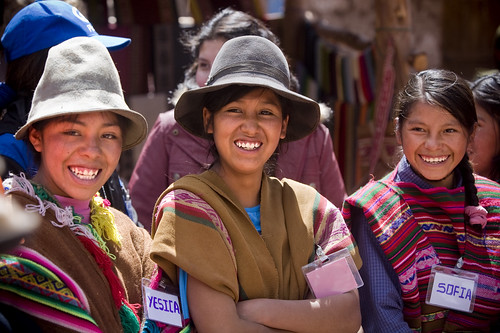5th March 2013 Lima, Peru
The successful women of tomorrow are the empowered girls of today
By Cariño Ramos (Plan International)

Women represent more than 50% (292 million) of the population in Latin America and the Caribbean, and of that total, more than 104 million are under the age of 19. Young and teenage girls are a particularly vulnerable group in society because of their gender and age.
Plan International recently published a report on the situation of young and teenage girls in Latin America and the Caribbean to raise awareness of the double discrimination this vulnerable group faces. Gender and age discrimination marginalises and excludes young and teenage girls from accessing opportunities, services and benefits, particularly the right to equality of education. When added to other groupings that face equal discrimination, such as ethnicity or disability, the situation becomes much worse.
Among the barriers that young and teenage Latin American and Caribbean girls face, several main hurdles have been identified: high rates of teen pregnancies; domestic violence and sexual violence (where perpetrators are mostly members of the immediate family); the early start of domestic work; the high rate of sexual exploitation and human trafficking; and the lack of birth registrations.
Violent and discriminatory cultural and social patterns are so ingrained in our societies, where they are considered “natural” and become part of day-to-day interpersonal relationships.
In the context of education, there is concern regarding the lack of an approach on gender equality through learning. School curricula seldom broach this subject, and, frequently, school materials confirm and perpetuate traditional stereotypes of women and men in society.
To combat this, a joint effort is required between the State, civil society, international cooperation and the population, to eradicate gender inequality.
This is a challenge, but its raison d’être becomes clear when we hear the voices of girls, adolescents and young women who have great dreams and who valiantly express their future projects and aspirations for life but are not given the tools to turn those dreams into reality. Society should commit to strengthen their capacities and abilities so that they are autonomous and empowered – and involve men and boys – to break the intergenerational cycle of poverty and bias.
Girls and female adolescents are most vulnerable
Peru:
- Only 15.9% of women in rural areas have finished secondary school at the appropriate age and only 4 in 10 rural female teenagers finish secondary education.
- For every 100 male teenagers who finish secondary school at an appropriate age, only 82 female teenagers manage to do the same.
- 11% of the population of women in rural areas who are 17 or older have received no education (1,042,830). If we compare male and female adolescents: 11 of every 100 women are illiterate compared to only 4in 100 men.
- 12.5% of females between 15 and 19 are already mothers or are pregnant for the first time. The number of teen pregnancies has not varied in 11 years.
- The highest percentage of adolescents who are mothers or are pregnant occurs among women who have no education or have only completed primary school (19.7% and 33.9%, respectively).
To learn more about Plan International’s work and its global campaign Because I Am A Girl, please visit: www.plan-international.org
* Cariño Ramos: Gender Specialist, with, 15 years’ experience in the subjects of gender, social sciences and the regional development of Latin America. She has worked for the Government of Peru and in non-governmental organisations. Currently, she is the National Gender and Interculturality Coordinator for Plan International Peru. cariño.ramos@plan-international.org
Note: The views expressed in articles and blogs of our guests do not necessarily reflect the position of the British Embassy in Peru.